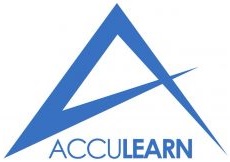Introduction
Training directors and managers, as well as training and development specialists and coordinators. Needs assessment analysts, instructional designers, evaluators of training programs, individuals in a leadership and support role for the training function will also benefit from this program.
Objectives
- Use appropriate methods to identify training needs.
- Analyze and sort the data as a result of a Training Needs Assessment (TNA).
- Define the various evaluation levels and write Instructional Learning Objectives targeting each level.
- Select appropriate data collection methods/ instruments for each of the evaluation levels.
- List ways to improve transfer of skills from the workshop to the workplace.
- Calculate training programs costs and calculate their Return On Investment (ROI).
Content
Day One
The General Framework
- Why Identify Needs?
- The Training Needs Assessment Process
- Present and Future Indicators of Training Needs
Day Two
ITN: Whose Responsibility Is It?
- The Style Inventory
- Identifying Potential Internal Training Resources and Subject Matter Experts (SMEs): Group Activity
Day Three
Methods for Identifying Training Needs
- The Four Steps of Needs Assessment
- Questions to Ask during Each Phase
- Data Collection Template
Day Four
Data Gathering: The Cornerstone for ITN
- Quantitative and Qualitative Methods
- From Interviews to Focus Groups
- Comparison of Primary Data Gathering Methods:
- Characteristics
- Advantagesand Disadvantages
Day Five
Analyzing and Sorting the Data
- Content Analysis of Qualitative Data
- A Practical Example of Qualitative Data Analysis
Day Six
Linking Training Needs Assessment with Program Design and Program Evaluation
- Significance of Learning Objectives
- Components and Characteristics of Learning Objectives
- Writing Learning Objectives
- Ten Lessons on How to Evaluate Training
- Levels of Evaluation:
- Levels Defined
- Preliminary Evaluation Information
- Chain of Impact between Levels
- Characteristics of Evaluation Levels
- An Overview of ROI
- Evaluation Matrix
Day Seven
Evaluation Instruments and Collecting Post Program Data
- Methods to Collect Post-Program Data
- Selecting the Right Data Collection Method
Day Eight
Evaluation at Levels I and II
- Reaction Sheets
- Characteristics of a Reaction Sheet
- Assessments: Pre Tests and Post Tests
Day Nine
Evaluation at Level III – Skill Transfer: From the Workshop to the Workplace
- What So Often Happens versus What Should Happen after Training
- Barriers to Skill Transfer
- Ways to Improve Transfer of Skills
- Responsibility for Improving Skills Transfer
- Methods to Measure Transfer of Learning to the Job
Day Ten
Converting Data to Monetary Value and Calculating the Return On Investment (Levels IV/V)
- Hard Data
- Soft Data
- Characteristics of Hard/Soft Data
- Isolating the Effects of Training
- Tabulating Program Cost
- A Practical Case Study on Calculating Return On Investment



